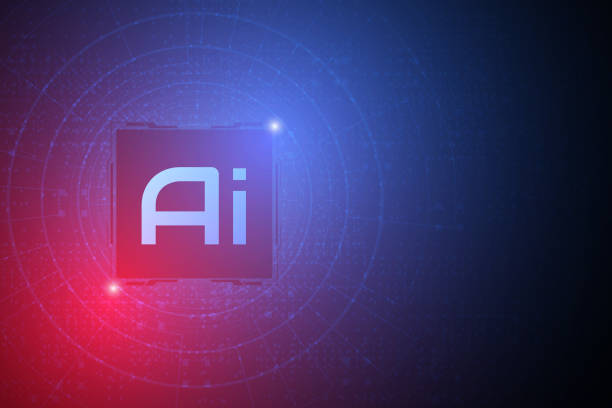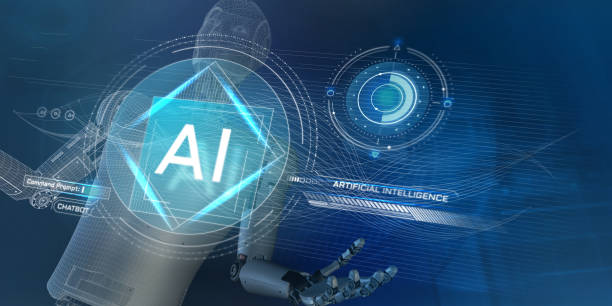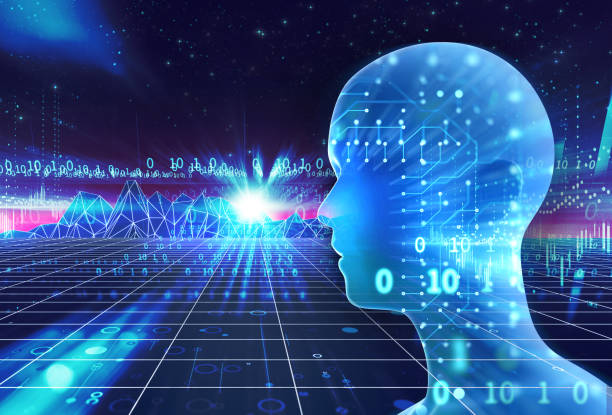What is Artificial Intelligence? Definition and Key Concepts
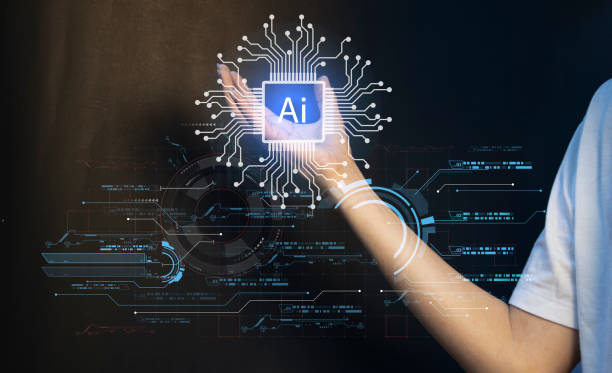
Artificial intelligence (AI) is a branch of computer science dedicated to building intelligent machines, especially intelligent computer programs.
These machines are capable of performing tasks that typically require human intelligence, such as learning, reasoning, problem-solving, natural language understanding, and pattern recognition.
Artificial intelligence attempts to simulate human cognitive processes in machines.
Key concepts in artificial intelligence include Machine Learning, Deep Learning, Natural Language Processing (NLP), Computer Vision, and Robotics.
Machine learning allows algorithms to learn from data and improve their performance without explicit programming.
Deep learning is a subset of machine learning that uses artificial neural networks with multiple layers to analyze data.
Natural language processing enables machines to understand and generate human language.
Computer vision enables machines to understand images and videos and recognize objects.
The ultimate goal of #artificial_intelligence is to create systems capable of performing complex tasks with high independence and efficiency.
This technology is currently used in many industries such as healthcare, finance, energy, and transportation, and its role is expected to increase dramatically in the future.
Do visitors leave your online store site before making a purchase? Don’t worry anymore! With Rasaweb’s professional online store design services, solve the problem of not converting visitors into customers forever!
✅ Significant increase in conversion rates and sales
✅ Unique and attractive user experience
⚡ Contact us now for a free consultation!
A Brief History of Artificial Intelligence from the Beginning to Today

The history of artificial intelligence dates back to the mid-20th century.
In 1950, Alan Turing published a famous article entitled “Can Machines Think?” which laid the groundwork for research in this field.
In the 1950s and 1960s, researchers made significant advances in problem-solving and computer games.
Programs such as “Logic Theorist” and “General Problem Solver” showed that machines could solve logical and mathematical problems.
In the 1970s, due to hardware and algorithmic limitations, progress in artificial intelligence slowed down.
This period is known as the “AI Winter.”
However, in the 1980s, with the emergence of Expert Systems that simulated the knowledge of experts in specific fields, interest in artificial intelligence was revived.
In the 1990s and 2000s, with advances in computing power and access to vast amounts of data, machine learning and artificial neural networks progressed dramatically.
Algorithms such as Support Vector Machines and Deep Neural Networks were able to provide much better performance in pattern recognition, natural language processing, and computer vision.
Today, artificial intelligence is used in many fields, including self-driving cars, facial recognition, machine translation, and virtual assistants such as Siri and Alexa.
This continuous evolution has made artificial intelligence one of the most important and popular fields of technology.
The future of artificial intelligence is full of new opportunities and challenges that require further research and innovation.
Applications of Artificial Intelligence in Various Industries
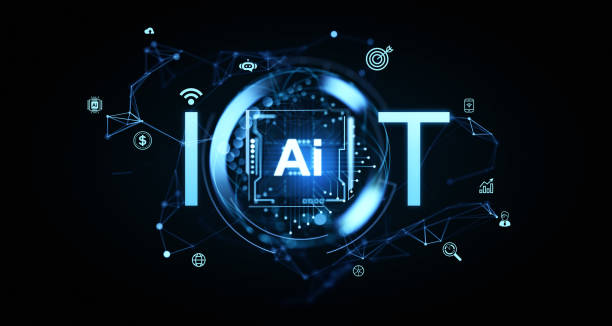
Artificial intelligence has widespread applications in various industries and dramatically improves processes and services.
In the healthcare field, artificial intelligence is used for disease diagnosis, drug development, and personalized care.
Machine learning algorithms can analyze medical images such as MRI and CT scans and identify abnormalities with high accuracy.
In the financial industry, artificial intelligence is used for fraud detection, risk management, and providing financial consulting services to customers.
Machine learning algorithms can identify suspicious patterns in financial transactions and prevent fraud.
Also, artificial intelligence can help investors make investment decisions and suggest more optimal portfolios.
In the manufacturing industry, artificial intelligence is used to optimize production processes, control quality, and predict equipment failures.
Machine learning algorithms can analyze production data and identify weaknesses.
Also, artificial intelligence can help manufacturers reduce costs and increase productivity.
In the transportation sector, self-driving cars are one of the most important applications of artificial intelligence.
These vehicles use sensors and advanced algorithms to understand their surroundings and move without the need for a human driver.
Artificial intelligence also plays an important role in traffic management and route optimization.
Finally, artificial intelligence has many applications in the field of education.
Intelligent educational systems can help students learn and provide educational content in a personalized manner.
Also, artificial intelligence can help teachers evaluate student performance and provide appropriate feedback.
| Industry | Application of Artificial Intelligence |
|---|---|
| Healthcare | Disease Diagnosis, Drug Development |
| Finance | Fraud Detection, Risk Management |
| Manufacturing | Process Optimization, Quality Control |
| Transportation | Self-Driving Cars, Traffic Management |
Advantages and Disadvantages of Using Artificial Intelligence
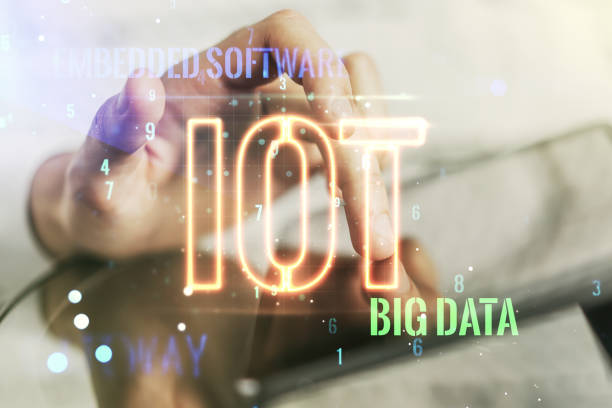
The use of artificial intelligence has many advantages, including increased productivity, reduced costs, improved accuracy, and personalized services.
Artificial intelligence can automate and perform tasks that are tedious and time-consuming for humans quickly.
Also, artificial intelligence can analyze large data and identify patterns that are not visible to humans.
However, the use of artificial intelligence also has disadvantages.
One of the most important disadvantages is the high cost of developing and implementing artificial intelligence systems.
These systems require significant investments in hardware, software, and human expertise.
Also, artificial intelligence can lead to job losses because machines can automate many tasks.
Another disadvantage of artificial intelligence is concerns about privacy and data security.
Artificial intelligence systems need a lot of data to learn and improve their performance.
This data may include personal and sensitive information, which, if misused, can lead to serious harm.
In addition, artificial intelligence algorithms may be biased and make decisions that are unfair to some people.
To reduce the disadvantages and increase the advantages of artificial intelligence, it is necessary to develop appropriate policies and regulations.
These policies should help protect privacy, prevent discrimination, and ensure responsible use of artificial intelligence.
Is your company’s website as professional and reliable as it should be? With a professional company website design by Rasaweb, create an online presence that reflects your credibility and attracts more customers.
✅ Build a powerful and professional image of your brand
✅ Convert visitors into real customers
⚡ Get a free consultation now!
Ethical and Social Challenges of Artificial Intelligence

Artificial intelligence brings with it numerous ethical and social challenges that require careful attention and review.
One of the most important challenges is accountability for decisions made by artificial intelligence systems.
If a self-driving car crashes and causes damage, who will be responsible? The developer, the manufacturer, or the owner of the car?
Another challenge is algorithmic bias.
Artificial intelligence algorithms may make decisions based on the data used to train them, which are unfair to some people.
For example, an AI-based hiring system may unintentionally favor men over women.
To prevent algorithmic bias, it is necessary to carefully examine the training data and design algorithms that are fair and non-discriminatory.
Privacy is another important challenge.
Artificial intelligence systems need a lot of data to learn and improve their performance.
This data may include personal and sensitive information, which, if misused, can lead to serious harm.
To protect privacy, it is necessary to enact strict laws and regulations regarding the collection, storage, and use of data.
In addition, there are concerns about the impact of artificial intelligence on employment.
With the advancement of artificial intelligence, many tasks that were previously performed by humans are automated.
This can lead to job losses and increased economic inequality.
To address this challenge, governments and organizations need to provide training and empowerment programs to help people adapt to changes in the labor market.
The Future of Artificial Intelligence and Upcoming Prospects

The future of artificial intelligence is very bright and full of new opportunities.
With the advancement of technology, artificial intelligence is expected to penetrate all aspects of our lives and bring significant changes.
One of the most important upcoming prospects is the development of Artificial General Intelligence (AGI).
AGI refers to artificial intelligence systems that are capable of performing any task that a human can perform.
Achieving AGI can create huge transformations in all industries and fields.
In addition to AGI, artificial intelligence is expected to make significant advances in areas such as healthcare, transportation, and energy.
In healthcare, artificial intelligence can help diagnose diseases faster and more accurately, develop new drugs, and provide personalized care.
In transportation, self-driving cars can increase the safety and efficiency of transportation and reduce traffic.
In energy, artificial intelligence can help optimize energy consumption and develop renewable energy sources.
However, to fully exploit the potential of artificial intelligence, its ethical and social challenges need to be seriously considered.
Governments, organizations, and individuals must work together to develop appropriate policies and regulations that help protect privacy, prevent discrimination, and ensure the responsible use of artificial intelligence.
Finally, the future of artificial intelligence requires further research and innovation.
Researchers and engineers must constantly develop new algorithms and systems so that artificial intelligence can fully demonstrate its potential.
The Role of Data in the Development of Artificial Intelligence
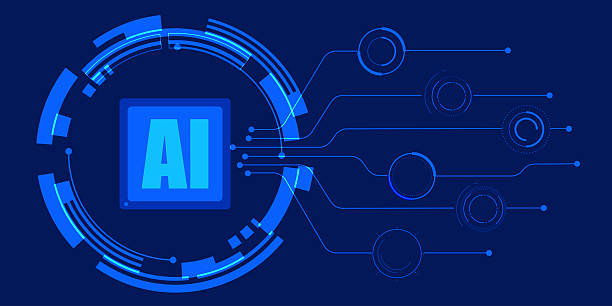
Data plays a crucial role in the development and advancement of artificial intelligence.
In fact, artificial intelligence cannot learn and improve its performance without data.
Machine learning algorithms require a vast amount of data for training and improvement.
The more data and the more diverse it is, the more complex patterns and relationships the algorithms can identify and make better decisions.
Data in artificial intelligence is divided into two main categories: Training Data and Testing Data.
Training data is used to train algorithms, and testing data is used to evaluate the performance of algorithms after training.
In order for algorithms to learn correctly, the training data must be clean, accurate, and representative.
Collecting and preparing data is one of the main challenges in the development of artificial intelligence.
Data may be collected from various sources, such as sensors, databases, social networks, and the Internet.
After collection, the data must be cleaned to eliminate errors and inconsistencies.
Also, the data must be converted into a format that is understandable for machine learning algorithms.
With the increase in the volume of data, the need for advanced tools and techniques for managing and analyzing data also increases.
Technologies such as Big Data, Cloud Computing, and Data Mining play an important role in this area.
These technologies help researchers and engineers store, process, and analyze large data efficiently.
In short, data is the beating heart of artificial intelligence.
Without quality data, artificial intelligence cannot fully demonstrate its potential.
| Data Type | Description | Application |
|---|---|---|
| Training Data | Data used to train machine learning algorithms. | Algorithm Training |
| Testing Data | Data used to evaluate the performance of algorithms after training. | Performance Evaluation |
Machine Learning and Deep Learning Differences and Applications

Machine learning and deep learning are two important concepts in the field of artificial intelligence that are often used interchangeably, but there are fundamental differences between them.
Machine learning refers to a set of algorithms that allow machines to learn from data and improve their performance without explicit programming.
In machine learning, algorithms automatically identify patterns and relationships in data and use these patterns to make predictions or decisions.
Deep learning is a subset of machine learning that uses artificial neural networks with multiple layers to analyze data.
These networks are inspired by the structure of the human brain and are able to identify complex and abstract patterns in data.
Deep learning performs very well, especially in areas such as computer vision, natural language processing, and speech recognition.
The main difference between machine learning and deep learning is in the way features are extracted (Feature Extraction).
In machine learning, it is usually necessary for humans to identify and extract the important features of the data.
This process can be time-consuming and costly.
In deep learning, neural networks automatically extract important features of the data, and there is no need for human intervention.
In general, deep learning is more suitable for problems that require the analysis of complex and abstract patterns.
Machine learning is more suitable for problems that require the analysis of simpler patterns.
However, both approaches can have widespread applications in various industries.
Does your company’s website function as well as your brand deserves? In today’s competitive world, your website is your most important online tool. Rasaweb, a specialist in professional corporate website design, helps you to:
✅ Attract customer credibility and trust
✅ Convert website visitors into customers
⚡ Get a free consultation!
Tools and Programming Languages Used in Artificial Intelligence
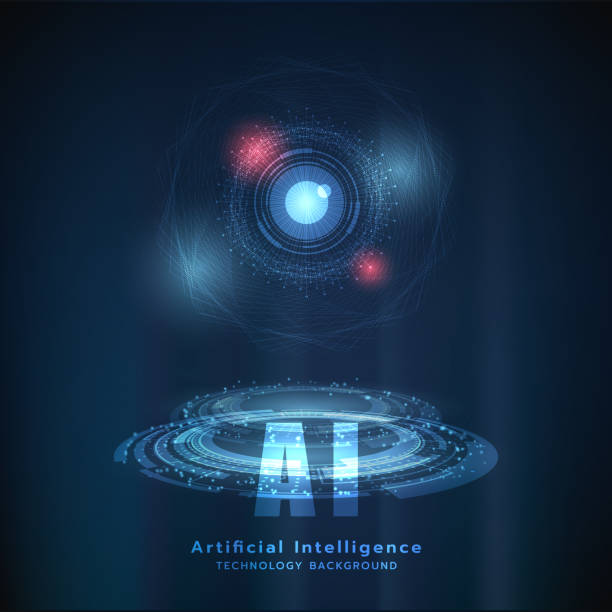
The development of artificial intelligence requires the use of specific tools and programming languages that help researchers and engineers design and implement algorithms and intelligent systems.
One of the most widely used programming languages in artificial intelligence is Python.
Python is a suitable choice for developing artificial intelligence projects because of its simplicity, flexibility, and extensive libraries.
Important Python libraries in artificial intelligence include NumPy, Pandas, Scikit-learn, TensorFlow, and PyTorch.
NumPy is used for performing numerical and matrix calculations, Pandas for managing and analyzing data, Scikit-learn for machine learning, TensorFlow and PyTorch for deep learning.
In addition to Python, other languages such as R, Java, and C++ are also used in artificial intelligence.
R is especially suitable for statistical analysis and data visualization.
Java and C++ are used to develop high-performance systems and mobile applications.
In addition to programming languages, other tools are also used in the development of artificial intelligence.
These tools include Jupyter Notebook, Google Colab, and AWS SageMaker.
Jupyter Notebook and Google Colab are interactive development environments that allow researchers and engineers to run and test their code online.
AWS SageMaker is a cloud-based machine learning platform that helps developers quickly and easily train and deploy machine learning models.
How to Enter the World of Artificial Intelligence A Beginner’s Guide
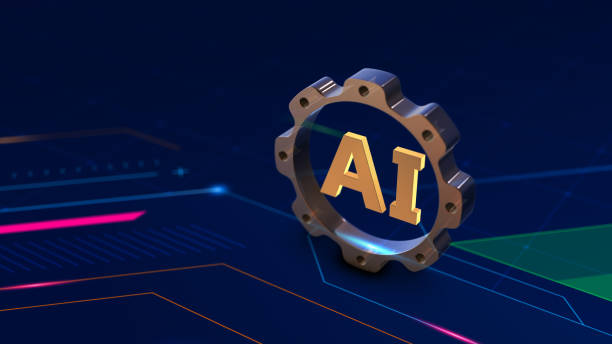
Entering the world of artificial intelligence can be an exciting and opportunistic career path.
To start, you need to acquire basic knowledge and skills in areas such as mathematics, statistics, computer science, and programming.
Understanding the concepts of linear algebra, calculus, and statistics is essential for understanding artificial intelligence algorithms.
After acquiring basic knowledge, you can learn the programming languages used in artificial intelligence, such as Python.
Learning Python alone is not enough, and you should also become familiar with specialized libraries such as NumPy, Pandas, Scikit-learn, TensorFlow, and PyTorch.
There are many online educational resources for learning these libraries, including training courses, video tutorials, and official documentation.
After learning the theoretical concepts and practical tools, you can strengthen your skills by doing small and practical projects.
Starting with simple projects such as image recognition, stock price prediction, or sentiment analysis in texts can help you get acquainted with the real challenges of developing artificial intelligence.
Participating in specialized training courses, workshops, and conferences related to artificial intelligence can also help you expand your knowledge and network with experts in this field.
Also, reading scientific articles and new research in the field of artificial intelligence can help you stay up-to-date with the latest developments in this field.
Finally, to succeed in this field, you need to be patient and persistent and continuously learn and improve your skills.
Frequently Asked Questions
| Question | Answer |
|---|---|
| What is the definition of Hosh Masnoi (Artificial Intelligence)? | It is a field in computer science that aims to create intelligent machines that can think, learn, solve problems, and make decisions like humans. |
| Mention some common applications of artificial intelligence. | Includes self-driving cars, voice assistants (such as Siri and Alexa), recommendation systems (such as Netflix and Amazon), facial recognition, and medical diagnosis. |
| What is the difference between Narrow Artificial Intelligence (ANI) and General Artificial Intelligence (AGI)? | Narrow Artificial Intelligence specializes in a single and specific task, while General Artificial Intelligence possesses a human intellectual ability to perform any cognitive task. |
| What is Machine Learning and its relationship to Artificial Intelligence? | Machine learning is a branch of artificial intelligence that focuses on developing algorithms that allow systems to learn from data without explicit programming. |
| What are Artificial Neural Networks? | They are computational models inspired by the structure and function of the human brain, and are used in deep learning to process data and discover complex patterns. |
| Mention some ethical challenges related to artificial intelligence. | Includes issues of privacy, bias in data and algorithms, job loss, and responsibility in the event of errors or unfair decisions. |
| What is Natural Language Processing (NLP)? | It is a branch of artificial intelligence that focuses on enabling computers to understand, interpret, and generate human language in a useful and interactive way. |
| How can artificial intelligence affect the labor market? | It can lead to the automation of some routine tasks, requiring worker retraining and creating new jobs in the design, development, and maintenance of artificial intelligence systems. |
| What is Computer Vision? | It is a field in artificial intelligence that enables computers to “see”, understand and interpret images and videos in the same way that humans do, enabling them to recognize objects and faces. |
| What is the importance of data in developing artificial intelligence systems? | Data is the fuel that feeds artificial intelligence systems, especially in machine learning. The quality and quantity of data greatly affect the accuracy and performance of the models and their ability to learn and make correct decisions. |
And other services of Rasa Web Advertising Agency in the field of advertising
Smart Sales Automation: Transform campaign management with the help of Google Ads management.
Smart Linking: A combination of creativity and technology to increase click-through rates through exclusive programming.
Smart Custom Software: A creative platform to improve customer acquisition with Google Ads management.
Smart SEO: An effective tool to increase sales by using real data.
Smart Content Strategy: Designed for businesses that are looking to manage campaigns through the use of real data.
And more than hundreds of other services in the field of internet advertising, advertising consulting, and organizational solutions
Internet Advertising | Advertising Strategy | Reportage Advertisement
Sources
What is Artificial Intelligence?
,Artificial Intelligence in Iran; Opportunity or Threat?
,Artificial Intelligence; Infrastructure and Threats
,Improper Use of Artificial Intelligence
? Are you ready to transform your business in the digital world? Rasa Web Digital Marketing Agency, with expertise in various fields including professional website design, SEO, and social media management, paves the way for your growth and success.
📍 Tehran, Mirdamad Street, next to the Central Bank, Kazeroon Jonoubi Alley, Ramin Alley No. 6

